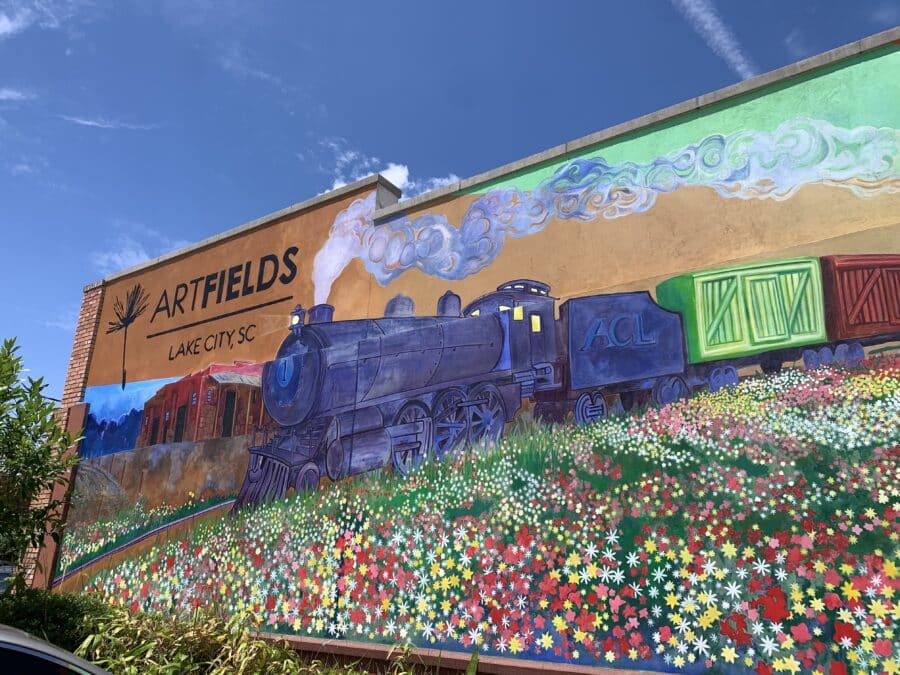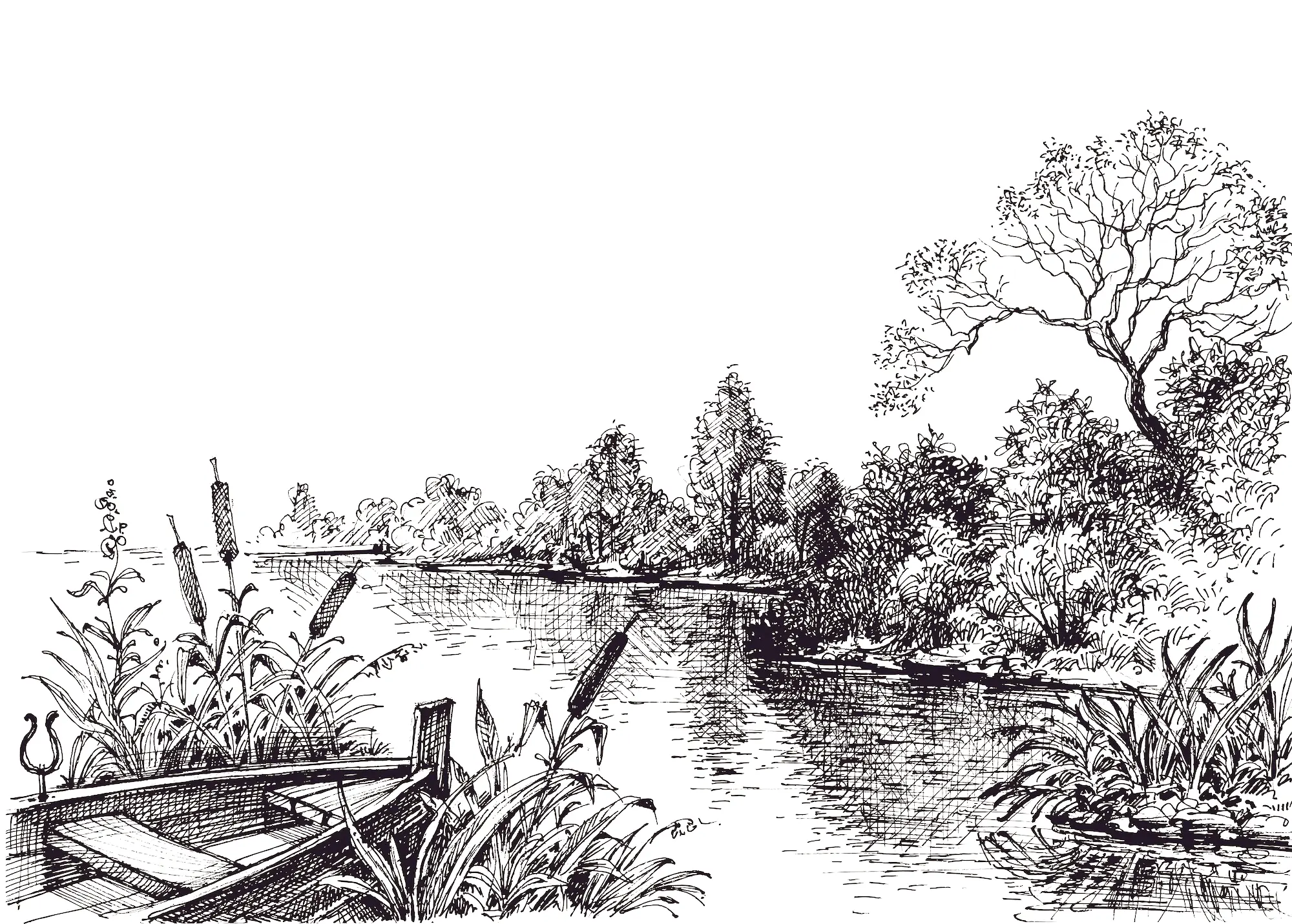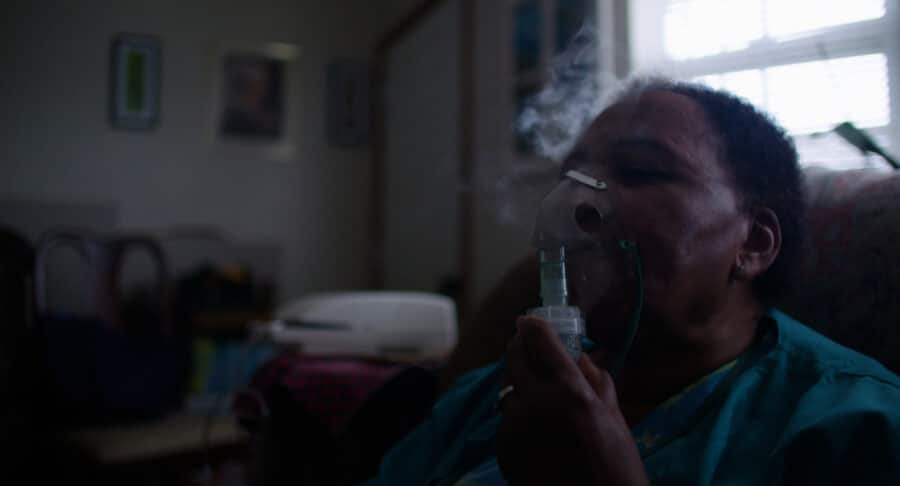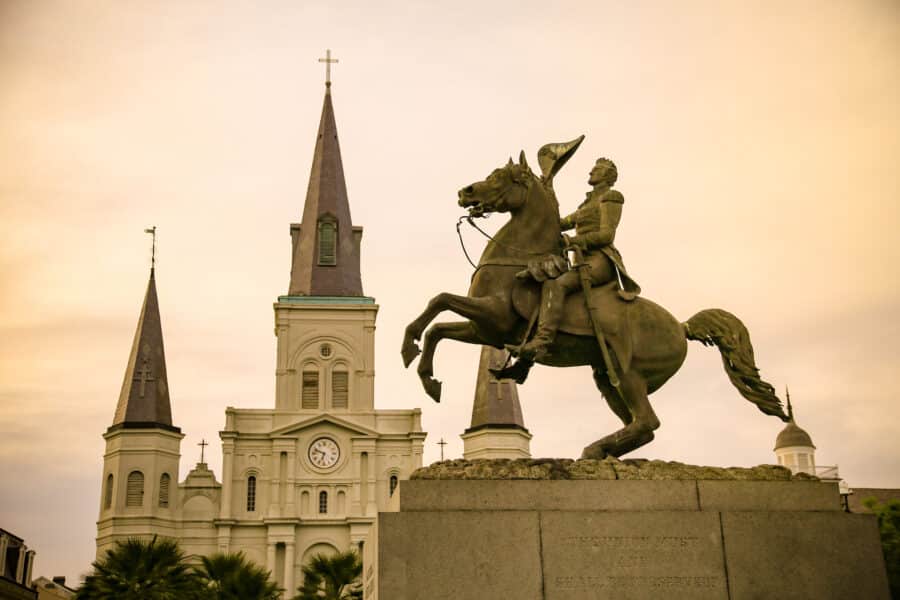Thurka Sangaramoorthy initially wanted to be a medical doctor. Her family, including her parents, her sister and her mother’s eight siblings and their children, were the only Sri Lankan immigrants in their community in Rochester, New York. Growing up, she watched her parents face discrimination, particularly in healthcare, and often translated for them in institutional settings. Her journey into anthropology began during her time at Barnard College, when she signed up for a course called “Perceptions of the Alien,” which explored how immigrants are made to feel othered, or excluded, by society, both in the United States and around the world. “I thought it was about extraterrestrial life,” Sangaramoorthy says, laughing. “[But] it was essentially a class about my life.”
Practicing an ‘Insurgent Politics of Care’ in Rural America
How rural residents and immigrant communities are adapting to the broken rural health landscape on Maryland’s Eastern Shore
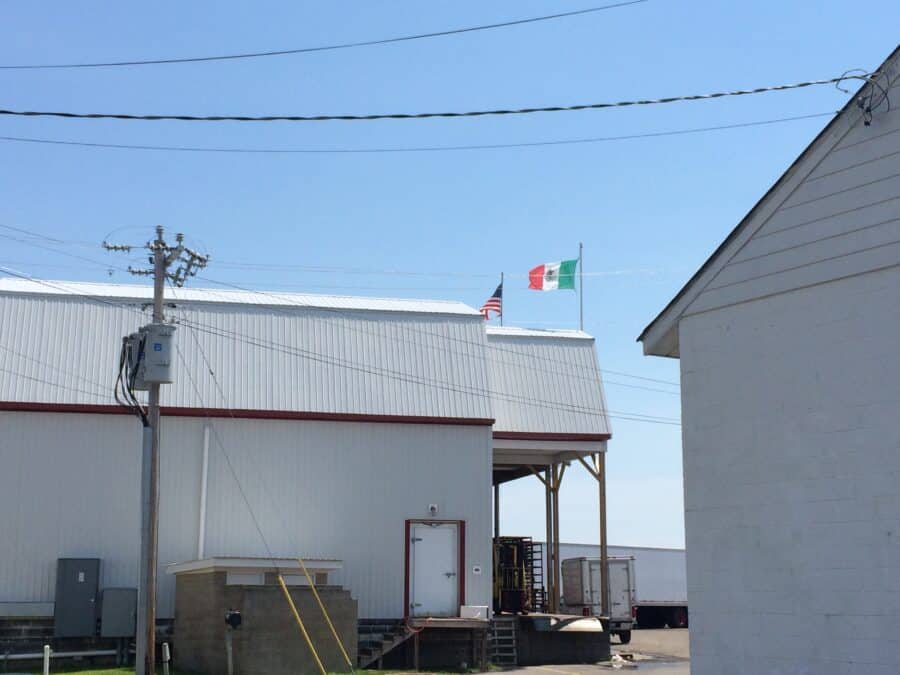

After earning her Ph.D. in Anthropology from the University of California, Berkeley, Sangaramoorthy completed postdoctoral research at the National Center for HIV/AIDS, Viral Hepatitis, STD and TB Prevention at the Centers for Disease Control and Prevention. As a professor in the department of anthropology at the University of Maryland, she recalls noticing how much of the department’s research on immigration was focused on urban environments like Baltimore and Washington, D.C., even though more than a quarter of Maryland’s residents, and a majority of its jurisdictions, are rural. As a result, she started doing fieldwork in 2013 in the Eastern Shore, a largely rural and conservative area east of Chesapeake Bay, which relies on immigrant labor, mostly from Latin America and the Caribbean, for its main industries: agriculture, poultry and seafood processing.
That fieldwork became the basis of her 2023 book Landscapes of Care: Immigration and Health in Rural America (University of North Carolina Press), in which Sangaramoorthy examines the impact of global migration on underinvested rural healthcare systems in the U.S., and how the “exclusionary logics” of immigration policy have combined with corporatized models of care to worsen disparities in health outcomes and care delivery. By exploring the shared conditions of suffering among those who navigate these healthcare “landscapes,” Sangaramoorthy reveals the ways that immigrants and rural residents have developed alternate forms of solidarity and inclusion, and how healthcare policy might be reshaped in response. (Read an excerpt from the book here.)
Since 2022, Sangaramoorthy, now a professor of anthropology at American University, has been coordinating the response to the refugee crisis from Sudan and South Sudan with the U.S. Embassy in Addis Ababa, Ethiopia.
Barn Raiser spoke to Sangaramoorthy about the making of Landscapes of Care, the dynamics between citizen and immigrant residents on the Eastern Shore and how healthcare providers and immigrants adapt to the lack of rural health infrastructure in the region.
In the preface to Landscapes of Care, you mention that you initially set out to learn about immigration to the Eastern Shore in Maryland, but that after speaking with people in the area, you started to focus on the connections between rural healthcare systems and immigrants. What sorts of things did you learn in your fieldwork early on that helped you see those connections?
I didn’t make the connection, I want to make that clear. It was being made for me.
I knew that there were things that I didn’t understand, things that I needed to really pay attention to. And I think what I was seeing on the ground, for instance, in terms of rural health, was really the manifestation of something that occurred decades ago, especially in terms of market-driven changes in the 1990s. This was going on, and it’s still going on in other kinds of global spaces where I work, in terms of managed care principles, emphasis on corporate and business models, that really have structured health care in this country. But their effects, how this affected rural spaces, were very different because there are fewer possibilities for cutting costs and increasing profits in rural spaces, because these are also spaces in which there is a lot of economic decline.
The consolidation of healthcare through a model of corporate efficiency has had a much more drastic and negative effect in rural spaces. We had a little taste of it during the Covid-19 pandemic when there was so much discussion about rural hospitals closing. And I think many people were shocked, but this had been going on for a long time. There have been drastic reductions in healthcare institutions like hospitals and clinics. There’s lowered Medicare reimbursements. There are fewer physicians—in the 10 years that I’ve worked in Maryland’s Eastern Shore, I think I’ve interacted with literally only two physicians. Many of the people that I worked with were nurses and nurse practitioners or other types of providers.’
The ACA [Affordable Care Act], or what most people call Obamacare, which was passed in 2010, was designed to provide a lot of relief. But many people that I worked with, felt like it didn’t do very much for them. It increased the number of people that can have health insurance, but it didn’t do much in terms of providing the kind of spaces where people can access care. It didn’t get at the root of some of these issues.
What I realized, and what people were trying to tell me, is that the kinds of vulnerabilities people have in rural spaces were very similar to the kinds of challenges that immigrants have as well. And it’s only compounded for immigrants because they have other types of needs and other kinds of vulnerabilities that [citizen] residents don’t have. There are a lot of people who are working in jobs that are really dangerous, and for low pay. They don’t have many available clinics or hospitals. They don’t have a steady stream of healthcare professionals in their area. They have very limited access to care, and if they do, they have to go during workdays, and many people simply cannot afford the kind of costs that come even in safety net programs to get treatment or to even be seen.
Rural [citizens] in the Eastern Shore would say to me, “We understand what [immigrants] are going through, because we face it ourselves.” So it’s this kind of shared condition around vulnerability and security that really brings people together outside of these very formalized healthcare settings, in which very little care is actually there.
Something that stuck out to me was the fact that there are forms of solidarity between citizens and immigrants that I think gets lost in national conversations about immigration and rural places.
It’s so complicated. There’s this shared sense of insecurity that is constant. And I think that’s what really kind of brings people together. I’m not saying there’s not racism or xenophobia. I’m not saying that people are on the same sort of political platform, but there’s care happening outside of what one might call healthcare. And that’s what I really wanted people to understand. I think this is what people were trying to tell me, is that this is how we’ve always existed. We’ve always had to know how to care for each other. We know how to get by. And if you’re going to understand immigration, you need to understand that. And I think sort of that was the message that I just didn’t understand, because I didn’t understand the context of what it’s like to live in “flyover country.”
In the book you talk about how, in the face of the abandonment of rural areas by businesses and state institutions, immigrants are seen as the solution, but they’re also blamed for the decline. How does that dynamic play out specifically in the Eastern Shore?
I think this is so important because I think so much of our discussions around immigration are either about integration or feeling pushed out. I think it’s so much more complicated than that. There’s a huge tension, because immigrants are essentially keeping some of these industries alive where many people don’t care to work because the work is so difficult and pays so little. But these tend to be the only kinds of jobs that are available in rural areas. And so immigrants are there, doing this kind of work, keeping those kinds of rural economies going.
These are spaces that are experiencing population decline in a real way. Many of their children want to leave or have left. So they appreciate people who can stay, and then there are more people around and more resources. Several people said to me, “I really appreciate the diversity. It was never like this when I was growing up. I’m so glad that my children have different kinds of friends, and they’re learning so much about a global world and the different kinds of people that are there.” But rural spaces are not necessarily experiencing a rebirth, so to speak.
Oftentimes there is so much stress around the decline of these communities. Immigrants become an easy target to blame for deep-rooted causes that stem from the structural abandonment by state institutions and the federal government, taking away much of the social safety net. And so immigrants become the targets, or proxies for these issues.
There’s also racial tension. Maryland was a slave holding state. You still have a lot of generations of African-Americans that have moved there, that have lived there for a very long time, that are from the area, who have been underpaid or unpaid for their labor. Now there’s competition that pits different groups against each other. So there’s also a dynamic where immigrants are seen as people who will undercut African Americans for lower paying jobs. So it’s really complicated.
What industries on the Eastern Shore rely on immigrant labor? And what are the different demographics that make up that labor?
Like many rural regions, when you think about immigrant labor, most people often think about farm work. There’s definitely that. Cotton and tobacco were the major economies historically in this region. Now it’s mainly fruits and vegetables. There’s a lot of tomatoes and other kinds of vegetables and fruits that are grown on the Eastern Shore.

The demographics are really varied here: Latin America, Mexico mainly. There’s also this long tradition of Haitian and other current-day Black immigrants [primarily from the Carribbean and other countries]. There used to be African-American migrant labor forces that traveled from Florida up through the East Coast. Haitians and other Black immigrants have largely replaced that labor force.
Poultry is huge. There’s quite a bit of poultry processing on the Eastern Shore of Maryland and particularly in Delaware. It used to be a heavily African American labor force, but now it’s much more of a mix of people from Mexico and Latin America. But it’s predominantly Haitians that are working in poultry.
Seafood processing, particularly crabbing, is unique to the Eastern Shore because of its location on the Chesapeake Bay. This is a labor force that was almost entirely poor African American women, who lived in this area. Now, it is almost entirely Mexican women on H-2B visas.
On a national scale, often what gets focused on, in terms of immigration, comes down to one type of immigrant, namely undocumented immigrants. It’s interesting how so many other types of immigration interact with rural spaces, and how the dynamics of it are way more complicated.
It’s important to me to highlight what is happening in rural spaces, because the growth of immigration to rural areas is really drastic. We tend to think of immigrants as somewhat placeless, in a sense. One thing that I really want to highlight is that immigrants have always had so much influence over geography and placemaking. They’re not placeless people. They actually have an impact on the very places in which they are living, even if they’re mobile.
I think this comes out of my own sense of being a brown immigrant, but also from my entry into immigration research, which was really through Black immigrants. And that is so different. And I think in some ways, researchers and academics haven’t done much better than policymakers by rendering immigrants into one particular kind of experience. We’re also to blame. So much of the conversation is about legality and whether you’re legally supposed to be here or not, which is only one way of understanding it.
It really flattens our understanding of how different things are on the ground and how many variations there are. People’s experiences are not just about legality. For Black immigrants, legality is important. But being racialized so profoundly shapes how they experience their life in the U.S. And it is something that I think we forget because of this archetype of an immigrant as undocumented and Mexican. And as a result, our policies are about making that the very thing the state responds to. I don’t agree with that. We have to understand that there are different dynamics at play, that legality is not the only way to understand the experience of immigrating to this country.
Near the end of the book, you talk about how both medical providers and immigrants adopt an “insurgent politics of care” to adapt to the lack of available healthcare infrastructure. Could you unpack that term a bit? What are the ways that a “politics of care” manifests itself?
What I’ve been trying to explain is the informal way that rural healthcare works. For instance, on the Eastern Shore, it’s literally a few people that are holding up any sort of semblance of what we call a safety net. It’s not even really a net. It’s just people who are doing this work and do it in various ways.
There’s this unbearable but very common way that healthcare works, which is a transactional relationship. You go in, you have insurance, you pay—it’s monetary, it’s corporatized, in that sense. There’s this rendering of what your risks are, what the insurance will pay for, etc.
But in rural spaces, care often cannot get doled out this way. Otherwise, no one would get care, or very few people would get care unless they had a serious emergency.
This is why the book is called Landscapes of Care because it’s really a varied sort of space, haphazard and much of it informal.
For instance, bartering. I’ll use that as a prime example. Bartering happens all the time in these spaces. I had a provider who, when people couldn’t pay, they would come with some of their harvest, they were too proud not to pay. They were not only farmers, but also immigrants who were farmworkers, who were paying with watermelon or other kinds of produce for their care, as a way of thanking the provider. The same provider, this was like in different cycles, they would have crab because it was a fisherman or watermen who couldn’t really pay either the co-pay or the cost of treatment. So like, these are the ways that people manage.
And I think in some ways it’s pushing back against how corporatized our healthcare system has become. It doesn’t work for a vast majority of people. And I think this shows us how you can care for people outside of these formalized environments, because that is essentially how people are caring for each other all over this country.
But this is how people are getting by. Because there’s no one else to take care of them, right? There isn’t. And so this is how people are taking care of themselves. And to me, that’s really powerful.
Read an excerpt of the book here.
Paco Alvarez is Barn Raiser Assistant Editor. Previously, he was the Don and Doris Shaffer Research Fellow at Type Investigations, a staff writer for the immigration newsletter Migratory Notes, and a Fall 2020 Civic Reporting Fellow for City Bureau, where he covered the 2020 elections and political participation in immigrant communities. His work has appeared in the Chicago Reader, Block Club Chicago and South Side Weekly.
Have thoughts or reactions to this or any other piece that you’d like to share? Send us a note with the Letter to the Editor form.
Want to republish this story? Check out our guide.
More from Barn Raiser

This Organizer Has a Proven Strategy to Win Affordable Healthcare for All
